Case Studies
Some examples of our recent research are provided in the case studies below - these studies relate to a wide range of research at WMG. If you would like to discuss working with WMG on a project, please contact a member of our team.
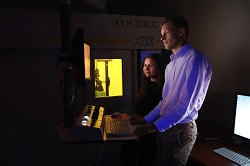 |
The Application of X-Ray Computed Tomography in the Aerospace IndustryThe main objective of this project is to identify how Computed Tomography (CT) can be employed for the benefit of the aerospace industry. The project will identify aerospace product inspection requirements where X-Ray Computed Tomography can add value and be a viable process for use in product development and/or production environments. This will be achieved through performing metrology and non-destructive testing (NDT) case studies on aerospace components, utilising the latest CT hardware and software, and the subsequent matching of capabilities and outputs to industry requirements.Read this case study |
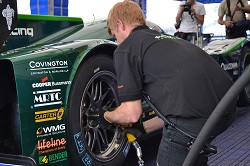 |
e-Motor Testing for a New Land Speed RecordWorking with: Drayson Racing TechnologiesOn the 26th June 2013, Drayson Racing Technologies set a new World Electric Land Speed Record of 205.139mph in the sub-1,000kg class. The unique capabilities of the WMG centre HVM Catapult’s Energy Innovation Centre were used to support Drayson Racing Technologies in achieving this world land speed record. The high performance capabilities of the EIC Powertrain testing facility were used to test the e-motors that would be used in the world record attempt. This allowed the motors to be pushed to the absolute limit of their performance. Read this case study |
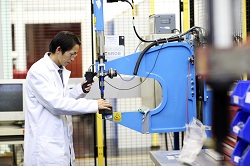 |
Self-Piercing Riveting Feasibility Prediction using Finite Element AnalysisWorking with: Jaguar Land RoverSelf-Piercing Riveting (SPR) is the core joining process used by Jaguar Land Rover to assemble lightweight body-in-white structures - it is a cold forming operation that allows the joining of two or more sheets of materials simply through a mechanical interlock. The objective of this research was to develop a finite element model able to simulate the SPR process and reproduce the cross-sectional geometry of the joint for assessment and testing. Read this case study |
 |
Energy Absorbers for Railway VehiclesWorking with: OLEO InternationalRailway vehicles traditionally use hydraulic mechanisms to absorb kinetic energy in day to day operations, such as shunting or general train operation. Hydraulic buffers can absorb a large amount of energy in a fully reversible manner. For more severe impacts it may not be possible to install hydraulic buffers with sufficient stroke to absorb the required energy, due to their relatively long installation length. This project is focused on developing the most efficient energy absorption mechanism for railway vehicles. The objective is to develop an innovative stand-alone energy absorber, which has a good ratio of deforming stroke to installation length and is resistant to vehicle loads. Read this case study |
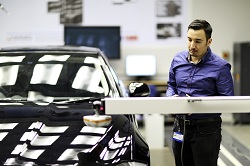 |
Optimising and Validating on-CMM Laser Scanning Technologies for AutomotiveWorking with: Nikon Metrology / Jaguar Land RoverThe WMG Product Evaluation Technologies Group, working in Digital Verification and Validation, are investigating the optimisation of laser scanning technologies for production measurement systems in automotive applications. This resulted in an independent validation study by WMG, of the latest Nikon Metrology laser triangulation sensor (Cross Scanner) and associated CMM programming software, for the measurement of a highly accurate, machined representation of an automotive body shell. Read this case study |
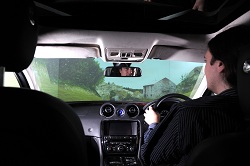 |
Validation Testing of Batteries under Extreme Real-world Driving ConditionsWorking with: Goodwolfe EnergyA common query around the development of electric and hybrid vehicles is around the power, performance and reliability of their battery-powered systems in real world driving situations. The aim of this research was to evaluate and characterise a prototype battery pack under extreme real-world driving conditions in order to inform the design of the next generation systems. WMG's Energy Innovation Centre provided facilities to test the capabilities and characteristics of these systems. Read this case study |
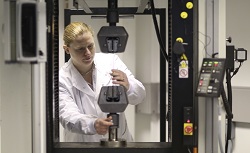 |
Metal-Polymer Hybrid Injection Moulding for LightweightingWorking with: Jaguar Land Rover, Plastic Omnion, Corus, Sabic, InnovalThis was a collaborative project between a number of partners aimed at creating an injection moulding process for combining the strength properties of metal with the design flexibility and durability of plastic. The research concentrated on selection of the metal interface with the appropriate plastic to ensure full adhesion and compatible expansion of the two different materials. Read this case study |
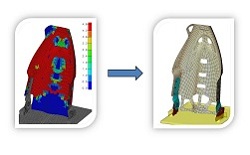 |
Lightweight Seat Back ProjectWorking with: GRM Consulting LtdThe Lightweight Technologies team at WMG recently worked with GRM Consulting Ltd to investigate ways to significantly reduce the weight of a car seat as well as reducing the environmental impact of manufacturing the seat. WMG’s approach was to characterise possible new candidate materials and then evaluate them against benchmark materials. The predicted performance was simulated using finite element analysis which enabled performance to be optimised. Read this case study |
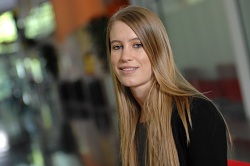 |
Internship to support biomaterial innovationWorking with: Ceram (Lucideon)Sophie Cox, a doctoral researcher at WMG, undertook an internship with Ceram, an independent materials technology company. Sophie joined Ceram’s biomaterials innovation team to further her commercial understanding of the synthesis and testing of medical materials, specifically hydroxyapatite (HA), a popular bone replacement material. It is used in a number of clinical applications, including inert implant coatings, void or defect fillers, bone grafts, hard tissue scaffolds and drug delivery entities. Sophie's expertise in materials is now being applied to projects within the Lightweighting theme of WMG's HVM Catapult. Read this case study |
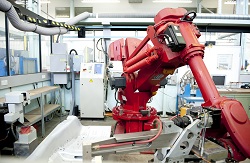 |
Investigation of Boron Steel Spot WeldsWorking with: Tata SteelBoron steel spot welds are known to suffer from issues during welding which can lead to porosity and reduced weld strength. In recent years, there has been considerable interest in characterising these welds with the aim of improving crash performance of automotive structures. This involves investigating the variation in material properties from the nugget through the heat affected zone and into the base metal. Read this case study |
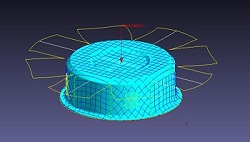 |
Ultra Lightweight Race WheelWorking with: Caterham CarsThis project aimed to assess the feasibility of manufacturing a race wheel from carbon fibre. Typical wheel materials are steel, aluminium and magnesium. Carbon composites offer potential weight savings of 60% compared to these materials. Carbon fibre’s high specific properties, high environmental resistance and excellent fatigue resistance make it an ideal material to reduce the mass of vehicle components, thereby reducing vehicle emissions. The objective of this project was to design, optimise and manufacture a lightweight 13” x 6” carbon fibre racing wheel rim for use on a Caterham sports car. Read this case study |
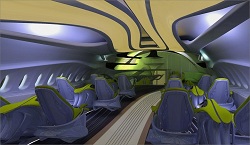 |
Virtual Reality Design ProcessWorking with: EnvisageEnvisage is an SME, based in Coventry, that designs and engineers innovative products for manufacture. They wanted to turn a physical prototype model (in this case an aeroplane seat) into a digital prototype to bring the product to life for its target audience during the design process. Envisage worked with WMG's Digital Validation and Verification team using one of its core technologies, a 4K resolution 3D visualisation wall, to bring their designs to life. Read this case study |
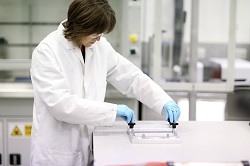 |
Optimised Adhesives for Automotive ApplicationsWorking with: Alpha AdhesivesAutomotive solutions will increasingly involve multiple materials including metals, polymers and composites and this will make processes, such as joining, more complicated. Current joining technology draws strongly on resistance welding and self-pierce rivet methods, whereas joining different materials may require more emphasis on adhesives, novel fusion and mechanical fixing. WMG and Alpha Adhesives worked together to investigate and evaluate potential candidate adhesives for joining of thermoplastic composites. Read this case study |
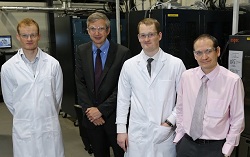 |
Battery System Modelling and Design ResearchWorking with: Jaguar Land RoverLimhi Sommerville is an Engineering Doctorate (EngD) student at WMG, University of Warwick. His project research looks into how to improve the life of electric vehicle batteries for automotive applications. This research being undertaken by Limhi is sponsored by Jaguar Land Rover. Limhi and his project supervisors were recently interviewed by Jaguar Land Rover's in-house magazine to learn more about how the collaboration takes place. Read this case study |
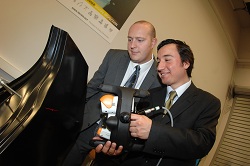 |
Digital Prototyping using Advanced Metrology SystemsWorking with: Stable Solutions Ltd, Fabrication Techniques Racing (FTR)Stable Solutions is an experienced motorsport design consultancy whose customers include Formula One and MotoGP race teams. They were working with FTR to develop a custom-made chassis to fit around a MotoGP engine but they wanted to make sure they got the prototype design right first time. The challenge for WMG was to assist in reducing the timescale and cost of the design process and to produce a highly accurate 3D image which could be used as part of the design process. Read this case study |
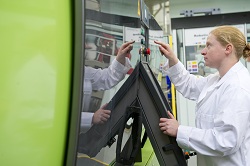 |
Dye Sublimation of Plastic PartsWorking with: IDT Systems LtdInjection moulding is a mass manufacturing technique for plastic components. WMG houses a range of these machines which enable us to produce a size range of components of commercial quality. IDT Systems is a company who provides solutions for decorating and authenticating product materials in 2D and 3D. WMG worked with IDT Systems to extend the understanding and use of a particular technology - dye sublimation - as a decoration for plastic components. Read this case study |
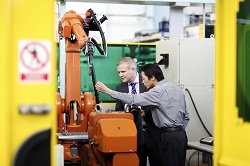 |
Automated Brazing for Low Carbon TransportWMG worked with an established bicycle manufacturer to investigate and demonstrate robotic brazing of bicycle frames in a way that would match the manufacturer's high quality, traditional handmade joins and to establish if the capital equipment and robotic brazing process was the correct technology for them. A series of tests were carried out to verify whether the technology met the manufacturer's requirements. Without this access to technology at WMG, it would have been difficult for the manufacturer to view the technology and assess whether to make a potentially large investment.Read this case study |
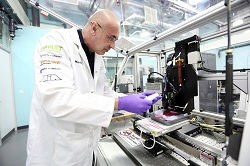 |
Validation Testing of Additive Layer Manufactured Intake ValvesThis project involved assessing the suitability of a desing of an intake valve for use in a combustion engine. Two hollow engine intake valves were produced using Additive Layer Manufacturing (ALM) (EOS M270) in Inconel 718, sealed using laser welding, and ground to a finished state by conventional processes. The valve design enabled by the additive manufacturing route represented a minimum 20% weight saving if a conservative approach towards maximum fatigue stress was adopted.Read this case study |
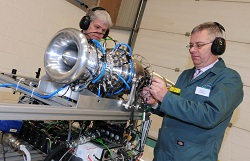 |
Developing jet turbine units for use in automotive applicationsWorking with: Bladon JetsWMG are engaged in a TSB funded collaborative research project with Bladon Jets. WMG are conducting development testing on Bladon’s leading-edge, micro jet turbine unit which can be used for automotive application or static power generation. The development work consists of investigation into alternative fuels, efficiency, emissions and performance using the twin dynamometers of the Vehicle Energy Facility (VEF) within the Energy Innovation Centre. |
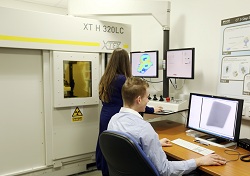 |
Non-destructive x-ray scanning for Quality Inspection of Weld JoiningWorking with: Cab Automotive LtdWMG's industrial computed tomography (CT) scanner uses x-ray equipment to produce highly detailed 3D images of components, both internal and external, which can be used for flaw detection, reverse engineering and rapid prototyping. Cab Automotive were looking to conduct a detailed analysis of the quality of their weld joints on their high quality seating products for the automotive industry. The method proved to be highly cost effective, efficient and accurate. Read this case study |
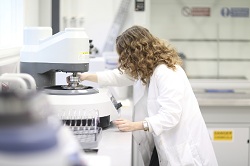 |
Nanomaterials for Advanced CompositesWorking with: Open UniversityNanomaterials are attracting significant interest owing to their interesting properties and mechanical benefits. One of their first areas of application is the use of nanoparticles as fillers in polymers to create a nanocomposite with enhanced properties. WMG has studied the form and structure of a particular (POSS) molecule cage as a pre-cursor to production trials. The study has characterised links between the form and structure of the material and has enabled further studies into the properties of such nanocomposites. Read this case study |
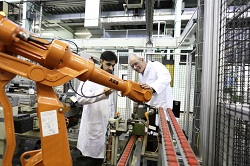 |
Cold Metal Transfer Welding ProcessesWorking with: Jaguar Land RoverAutomation Fusion Welding is a metal joining technology capable of making different joins using steels and aluminium. The technology enables an increase in production speed and quantity, saving time and cost. WMG worked with Jaguar Land Rover to investigate using an innovative fusion welding process to deliver an efficient and simplified application for Jaguar Land Rover's assembly line. Read this case study |
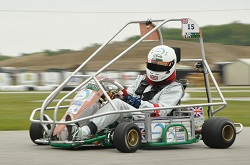 |
Lightweight Electric Go Kart ProjectThis project, carried out by 4th Year Engineering undergraduates from the University of Warwick, aimed to significantly reduce the weight of an electric go kart while maintaining functionality and robustness. The team worked with colleagues at WMG to apply lightweighting concepts and research outputs from WMG centre HVM Catapult research. The team were tasked with designing and building an electric go-kart to compete at the annual Electric Vehicle Grand Prix in Indiana, U.S.A.Read this case study |
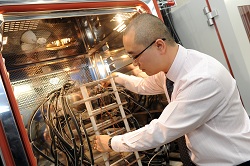 |
Low Carbon Vehicle TechnologyWorking with: Tata Motors European Technical CentreElectric and hybrid vehicles require several hundred cells to be connected to create a complete battery pack. Manufacturers have considered a range of techniques to connect the cells including soldering and laser / ultrasonic welding. WMG and Tata Motors European Technical Centre worked together to investigate the performance of various connection techniques using WMG's advanced lithium ion battery testing facility. Read this case study |
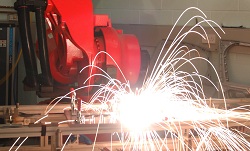 |
Remote Fibre Laser WeldingWorking with: Comau, Jaguar Land Rover, Prima Industrie, SPI Lasers, Stadco, Tata SteelThis joint project aimed to understand how the joining process and associated technology should be applied in an automotive body manufacturing centre. The resulting information was summarised in a business case and presented at an international industrial seminar where it was used as a benchmark and is now used as an industry base cost model. Read this case study |
